When Is Hair Transplant Required?
Hair transplants are increasingly common in India, addressing the rising issue of hair loss among both men and women due to various factors like genetics and environmental influences. Hair transplantation is necessary when balding or patchy hair distribution affects one’s appearance and self-esteem, especially if traditional treatments have proven ineffective.
Hair Transplants on a Budget: Explore Your Options in India
No matter how advanced the FUE hair transplant technique is and how attractive the scalp looks after the transplant, the main question that remains is that, is hair transplantation in India really successful? The answer is fortunately YES.
The FUE type of hair transplant offered in the HairMD clinic, Pune is known for its success rates with real and amazing hair transplant results. Hair transplantation in India has emerged as a common and popular cosmetic medical procedure.
According to Dr. Sachin Pawar, a hair transplant surgeon, the hair transplant rates in India vary from Rs. 15 to Rs. 120 per graft with some clinics offering hair transplant packages ranging from Rs. 30,000 and above according to the level of customization. The most common factors that are instrumental in determining the cost of the hair transplant are listed below:
- Requirements of the graft according to the grade and affected area of baldness
- The donor area which is usually important to determine whether the FUT or the FUE technique is to be applied
- The kind of technology, customization, and equipment used for the transplant
- The surgeon is the most important factor that determines the cost as well as the success of the hair transplant treatment
- It is often seen that the location of the clinic, that is, in which city the clinic is located plays a role in determining the cost of the hair transplant procedure
- Last but not least, the number of sessions or the time required for the treatment is another factor that contributes to determining the cost of the transplant
Medical treatment in India is often considered among the most affordable packages. However, the treatment offered in the hospitals, as well as clinics in the country, remains uncompromised. This is also the reason, medical tourists from even the most developed countries travel to India to avail the best medical facilities at an astounding price. Thus, like several other cosmetic treatments, the cost of hair transplants in India is one of the lowest across the world. International Candidates looking for affordable hair graft solutions may avail of the treatment at $0.20 to $1.6 per graft price range.
What Are The Factors Affecting The Cost Of Hair Transplant In India?
Factors Affecting Hair Transplant Costs
- Location: The choice of transplant centers impacts cost, with variations across cities in India.
- Doctor’s Expertise: Experienced doctors may charge more for specialized techniques.
- Extent of Transplantation: Costs vary based on the amount of hair to be transplanted.
- Type of Surgery: Different techniques have differing costs.
- Additional Costs: Post-operative care and clinic facilities can affect overall expenses.
FUT vs. FUE: Exploring Hair Transplant Options in India

Two main techniques are used to get the hair follicles that are required: FUE (follicular unit extraction) and FUT (follicular unit transplantation)
-
- FUE (Follicular Unit Extraction): FUE hair transplant in India is very common. In this particular procedure, the follicles of hair are cut directly from the backside of the head by thousands of small and secured punch incisions. The surgeon then makes small holes in the place where the hair is supposed to be transplanted with the help of a blade or special needle, and then they place these newly extracted follicles in that place. Once the graft is completed, the surgeon will cover the area with bandages so that it can heal in its own time. Hair transplantation cost in India for this type of surgery is very affordable, and even if multiple sittings are required, the cost will still be less expensive when you look at the benefits of this type of transplantation.
FUE (Follicular Unit Extraction) Cost in India
| LEVEL OF BALDNESS |
NO. OF GRAFTS REQUIRED |
AVERAGE COST (USD) |
| IIa |
800-1400 |
USD 900 to 1350 |
| III |
1000-1600 |
USD 1000 to 1500 |
| IIIa |
1400-1800 |
USD 1250 to 1850 |
| IV |
1600-2200 |
USD 1350 to 2050 |
| IV |
1800-2400 |
USD 1500 to 2300 |
| V |
2000-2500 |
USD 1650 to 2350 |
| Va |
2200-2800 |
USD 1700 to 2600 |
| VI |
2400-3000 |
USD 1850 to 2900 |
| VII |
2500-3200 |
USD 2000 to 3100 |
- FUT (Follicular Unit Transplantation): The FUT procedure is a little different from the FUE procedure. In the FUT procedure, the surgeon will identify a long area at the back of the head. This area should have good hair growth for a few inches long. The surgeon will then use a scalpel-like tool to remove a long (inches) of scalp skin at a single go. The area from where the skin graft is obtained is then closed by the procedure of stitching. The hair transplant surgeon will then cut up these long skin grafts into very small pieces with the help of a magnifying glass and a scalpel. These sections will then individually be implanted at the place where the hair is supposed to grow. The hair transplantation cost in India for this type of surgery may be a bit more when compared to the FUE procedure.
FUT (Follicular Unit Transplantation) cost in India:
| LEVEL OF BALDNESS |
NO. OF GRAFTS REQUIRED |
AVERAGE COST (USD) |
| IIa |
1400-2200 |
USD 1450 to 2300 |
| III |
1600-2400 |
USD 1650 to 2500 |
| IIIa |
2000-3000 |
USD 2150 to 2500 |
| IV |
2200-3400 |
USD 2300 to 3500 |
| IVa |
2400-3600 |
USD 2500 to 3700 |
| V |
2600-3800 |
USD 2300 to 3500 |
| Va |
2200-2800 |
USD 2500 to 4000 |
| VI |
3000-4600 |
USD 3150 to 4800 |
| VII |
3200-5000 |
USD 3300 to 5200 |
Additional Procedures:
PRP Treatment in India: Platelet-rich Plasma treatment abbreviated as the PRP treatment is gaining ground as a form of a modern solution for hair transplants. Supported by many specialists, PRP treatment is offered as the next best solution to hair loss after hair grafts. PRP is collected from the patient’s blood. The blood with a higher concentration of growth factors as well as cell signaling factors is injected into the candidate. PRP treatment has thus shown exceptional benefits in stimulating hair growth. India offers some of the most cost-effective PRP treatments across the world. Several clinics in the major metropolitan cities like Mumbai, Delhi, Chennai, Kolkata, etc. offer PRP treatment for hair loss in India. The cost of PRP hair treatment in India is estimated to be around $59.63 to $198.75.
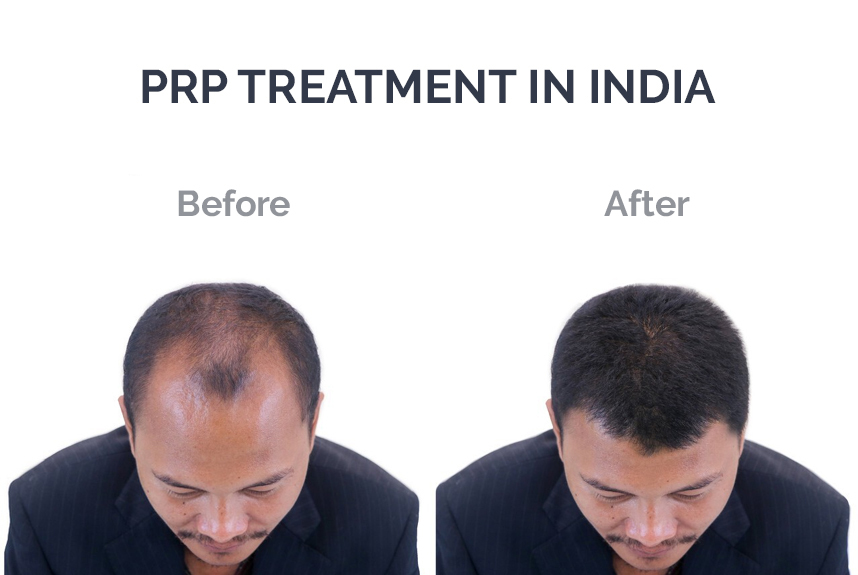
Robotic Hair Transplant In India: Robotic Hair Transplant is highly preferred in the case of Follicular Unit Extraction, or FUE. In this procedure, the hair follicles are extracted from the regions of dense growth (known as donor regions) and implanted in regions of less growth (recipient region) with the help of robotic technology. This procedure is preferred by both candidates and surgeons as it has higher accuracy than traditional procedures. Apart from this, there are several other advantages of robotic technology over other traditional technologies. This is because the latter is more time-consuming and is not completely efficient. Thus, robotic hair transplantation is preferred by the candidates who are ready to invest in a more permanent and aesthetic result altogether. The robotic hair transplant cost in India is approximately $0.87 to $1.43, which is lower than what is offered in many major countries. Thus, some of the best clinics in India which offer RHT are:
- Dermasculpt Skin and Hair Clinic
- iGraft Global Hyderabad
- Regenix Clinic
- Bbeauty Skin & Health Clinic
- Dr. Aggarwal’s Clinic
Surgical Benefits & Non-Surgical Benefits of Hair Transplant
Where baldness is a serious issue for people, many candidates often have difficulty in figuring out which procedure is the best fit for them. Choosing between the surgical and non-surgical treatment of hair transplant is a tough choice for people who are unaware of the advantages on either side. This is also the reason why proper medical guidance is highly required before availing any of hair transplantation procedure.
Benefits of Surgical Hair Transplant:
For people who want permanent hair solutions, availing surgical procedures guarantee better benefits of hair transplantation. Surgical measures ensure:
- Better physical appearance. This is because the procedure assures natural-looking hair growth thereby guaranteeing a more natural look to the individual.
- Cures balding. In most cases, surgical processes provide the ultimate solution for balding as the follicles are directly transplanted and implanted onto the scalp which causes hair growth
- Lesser maintenance. One of the prime benefits of hair transplantation via surgical methods is that it needs lesser maintenance. The hair growth is mostly natural and does not need additional effort after the procedure.
- Long-lasting. The surgical procedure is better lasting than the other procedures. This is because healthy hair-growing follicles are embedded inside the scalp which causes normal and regular hair growth for a long time.
Benefits of Non-Surgical Hair Transplant:
Where surgical treatment is often considered as a permanent solution, there are several benefits of non-surgical hair transplant, which are:
- Affordable. Non-surgical procedures are more affordable than surgical ones as they are minimally invasive and can be performed by traditional measures.
- Instantaneous result. One of the biggest reasons why most people adopt non-surgical procedures is because they can achieve the desired appearance instantaneously.
- Painless. Non-surgical procedures are adopted because they are not so painful. Such procedures do not have long-term side effects and also do not cause soreness.
How Long Does The Hair Growth Take?
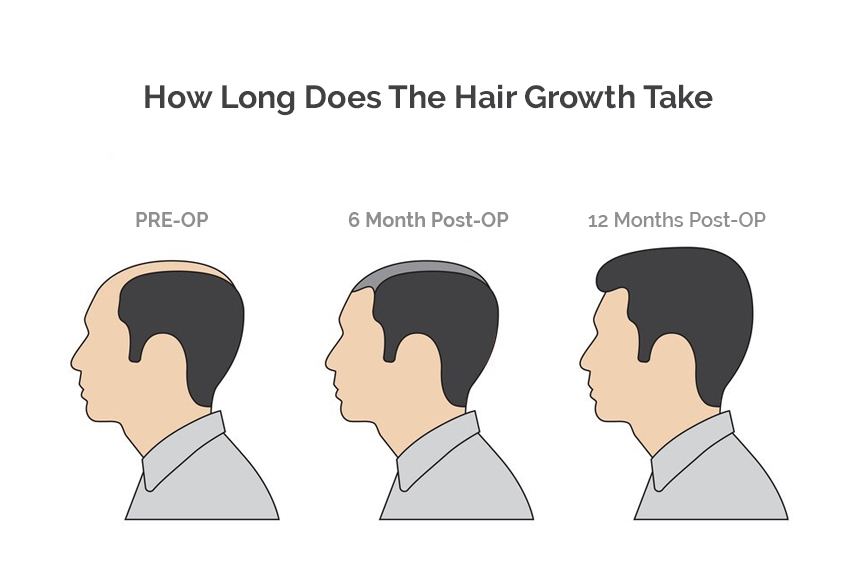
The rate of hair growth varies among individuals due to factors like metabolism and biochemical changes. On average, according to the American Academy of Dermatology, humans typically grow about one and a half inches of hair per month, totaling around six inches in a year. Healthy diet and supplements can enhance hair growth to some extent.
However, hair growth after transplantation follows a different pattern. In the initial three to four months post-procedure, growth is around 12% to 20%. By six months, it increases to approximately 50%, reaching over 80% by eight to nine months. Growth rates vary, with some peaking between the sixth to ninth months, while others may take up to 12 months.
Types of Hair Transplants Offered in India
Even though a few decades earlier, hair transplant was something very alien and viewed with skepticism by the people in India, the scenario is not quite the same as of 2018. Due to the rising trend of balding at a very young age because of stress, lifestyle, poor diet, and pollution, especially in the urban areas, the news of the low cost of these hair transplant treatments is one of the reasons for the increasing demand for the procedure. In some cases, cost as low as 30,000 for the whole treatment is a piece of very welcome news for the younger generations.
Although FUE (Follicular Unit Extraction) is the most advanced and popular technology, there are a few other types of hair transplantation in India. The FUT (Follicular Unit Transplant) technique and the strip harvesting method being two of them. The FUE hair treatment cost in India is comparatively low since it is a very popular and common technique that is opted for by both patients and surgeons.
Among the three types of procedures that are available for treatment in India, the FUT or the strip procedure can cost between Rs.40,000 and Rs.50,000. The second procedure, that is, the FUE costs around Rs. 30,000 and above. It is slower, less painful, and presently a very popular technique.
The third and most advanced technology available is the DHI procedure. The DHI hair treatment cost in India is around Rs. 2 lakhs to Rs. 5 lakhs. Although the newspapers and magazines nowadays are filled with advertisements of cheap hair transplant offers, surgeons recommend against blindly trusting them.
1. Body Hair Transplant In India
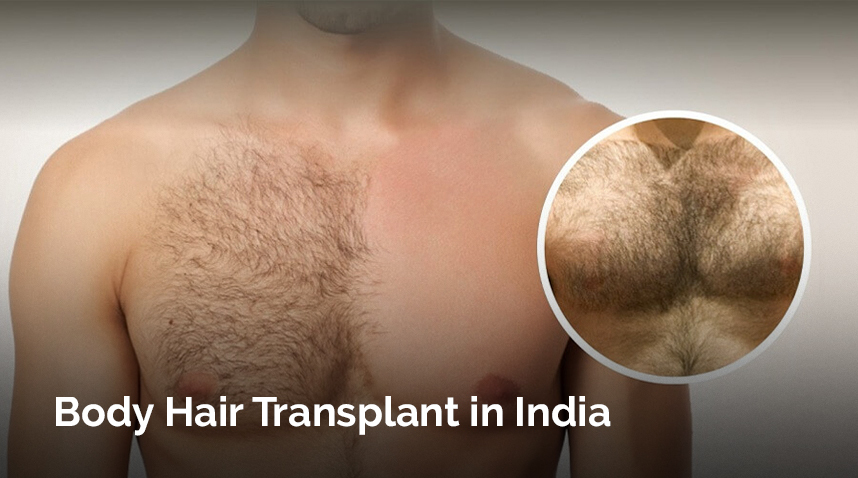
Body Hair Transplant, abbreviated as BHT has been a blessing for innumerable people in the world. Mostly preferred by people who wish to grow facial hair like eyebrows, mustache, or beard, BHT is availed by thousands of people worldwide. In this procedure, hair from anywhere on the body, that shows dense hair growth, is taken to be implanted in the areas that show lesser hair growth. For the procedure, the hair follicles are extracted from chest hair, abdominal hair, armpits, or pubic hair for the same. The procedure has gained high popularity due to its aesthetic properties. Unlike traditional hair graft solutions, BHT is availed by candidates who want to hide scars and injury marks. Accidental damage or burns cause scars on the body and leaves the area barren, which is why many candidates often resort to the Body Hair Transplantation procedure to cover the marks and help fresh hair growth. Apart from that, such hair follicles are even transplanted onto the head to cover baldness. However, a body hair transplant to the head is done in cases when the scalp of the candidate does not have an adequate supply of hair for transplantation. Hair transplanted from BHT is preferred in case the candidate wants to hide the hair graft scars. The procedure is thus offered in several places in India like Jaipur, Chennai, Vellore, Mumbai, Hyderabad, Kolkata, Delhi, and several others.
2. Facial Hair Transplant in India

Facial hair transplant is counted among aesthetic hair transplant procedures. These are opted by candidates who experience scare hair growth on their facial area. In most cases, facial hair transplantation is opted by men mostly to compensate for scarce mustache and beard growth. Apart from that, the procedure is also opted to increase hair growth in the eyebrows to achieve a thicker browse for fashion and beauty. There is no particular requirement for this procedure and can be opted to restore hairline even for thinning hair or areas where prior hair growth had not occurred. Many people opt for facial hair transplants for cheek beard and sideburns to cover the desired areas of interest. Hair for this purpose can be collected from anywhere on the body, preferably from the chest region or armpits, or abdominal region. The choice of donor area depends on the density of hair growth noted by the surgeon before the procedure. The procedure is performed by medical professionals who are experienced in the area. facial hair treatment in India is offered in several cosmetic surgery clinics and hair transplantation clinics. The cost of the procedure, though low, is affected by several factors such as the type of clinic, location of the clinic, the doctors involved, and the extent of the procedure required. Among the various types of FHTs, beard transplant cost in India ranges from approximately $0.69 to $1.70.
Advantages Of Facial Hair Transplants in India
There are several advantages of facial hair transplant procedures. Besides being aesthetically appealing, the procedure can result in:
-
- Accentuating the physical appearance. Thinned or missing hair in specific regions like eyebrows or beard lining.
- Hides scars. Accidental damage may leave scars that often compromise the appearance of people. This results in decreased self-esteem and confidence. Because of this, the candidates resort to cosmetic surgical procedures to cover the scars. If the scars are in the facial hairline, FHT is often the best solution
- Hide anomaly. Any kind of congenital or accidental anomaly or deformity caused in the face over the hairline can be easily covered by the FHT procedure. This not only enhances the physical appearance of the candidate but also boosts the confidence of the candidate manifolds.
- Natural look. One of the prime benefits of facial hair transplant is that it gives a completely natural look. This is because the follicles are implanted into the recipient region from the healthy donor region. Thus, these healthy follicles assist in healthy and thick hair that grows naturally from the follicles giving a completely natural look to the individual.
- No scar. The facial hair transplants are minimally invasive which means that the procedure does not leave scars. Thus, the candidate does not need to worry about the visibility of the scars post-procedure. Minor puncture marks are known to fade away with time.
3. Beard Hair Transplant in India
Beard transplant in India is commonly performed in cosmetic surgery clinics and hair transplantation clinics. the procedure is commonly performed by men who either do not have any growth in their facial hairline or have thin beard lining. Apart from that, beard transplantation is also availed by candidates who want to cover injury marks or scars, or burn marks. For the procedure to be performed, the doctor maintains strict protocols. Beginning with applying anesthesia locally on the area where the procedure needs to be performed, a 1mm circular incision is made on the donor region. Another incision or hole is made on the recipient area where the hair needs to be implanted. The follicular units thus extracted from the donor region are planted on the recipient region. Utmost care is taken to not damage the existing healthy follicles. Although the procedure offered is the same in all the clinics, the cost of the procedure may vary depending on the location of the clinic. Clinics in the major cities of the country are often appreciated for housing the best medical professionals. Besides, the use of advanced technologies in the treatment is also more prevalent in such multi-specialty clinics, which directly affects the cost of the procedure. Hence, beard transplant cost in Delhi, Mumbai, Hyderabad, Chennai, Kolkata, and other major cities has been estimated to be marginally higher than other cities in the country.
4. Eyebrow Hair Transplant In India

Eyebrows play a huge role in maintaining facial symmetry in people. This is also the reason why many people resort to opting for eyebrow hair transplant procedures. Performed by medical professionals, eyebrow hair transplant gives a fresh appearance to the candidate availing the procedure. This is because post-procedure the hair grows naturally from the transplanted areas and does not give any artificial look to the individual. The procedure is not only availed by native citizens but also by international tourists from all across the world. This is because eyebrow transplant cost in India are far more affordable than those offered in the other countries. On average, the cost per graft has been estimated to be $0.20 to $0.35. However, the cost of the procedure is subject to variation as it depends on several factors. The expense of the procedure depends on the clinic from where the procedure has been availed, the doctor who is performing the procedure, the extent and number of grafts required and the procedure (surgical and non-surgical) implemented. Eyebrow transplant in India is performed in an array of clinics in almost every major city of the country. These clinics are easily accessible due to their location and are recognized for their high success rates altogether.
5. Moustache Hair Transplant in India
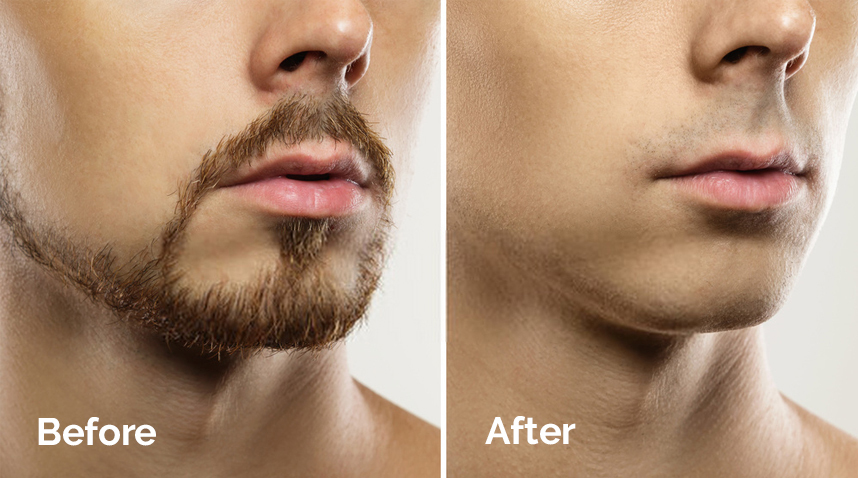
Having a mustache is more of pride for most men around the world. Not only does it add a tinge of glamour to the individual but also gives a distinct touch to the personality of men. Where some people choose to carry themselves with grace, others opt for better alternatives like transplantation procedures. Moustache hair transplant has grown very popular in the last few decades and thousands of people are opting for the procedure. The procedure can be availed by men who are diagnosed with missing or thinning hairlines in the area. For the procedure, hair follicles from different regions (donor regions, where dense hair growth) are extracted and transplanted into the recipient region of the candidate; in this case, mustache lining. The procedure is highly favored by people as it gives a natural look to the candidate undergoing the procedure. It is one of the most common procedures performed in almost all hair transplant clinics across the world. However, countries like India, Malaysia, etc. offer affordable packages for the procedure. Mustache hair transplant cost in India is estimated to range from $0.56 to $1.61, which is why the country witnesses a high number of foreign medical tourists besides native candidates.
7. Chest/ Pubic Hair Transplant in India

The most common areas of follicular extraction are the chest, armpits, and pubic region. These regions show high growth and have dense healthy follicles, which is why the follicles extracted from these regions show high success in hair transplantation. Hair follicles from the chest and pubic areas are known for thicker hair growth. The quality of hair in these areas is notably healthier than that in other areas of the body. Hair from these areas is mostly extracted for hair transplant in the head when the backside of the scalp has thinner hair. Body hair transplant in India has grown popular owing to the high success rate of the clinics. The cost of a body hair transplant is affordable than most countries and the quality of the treatment is uncompromised. Besides, another type of procedure, pubic hair transplant in India has also attained fame. This is because pubic hair is used for transplantation procedures on the head and other areas of interest. The cost of the procedures varies as per the extent of baldness diagnosed, the number of grafts required, and the type of clinic and doctors performing the procedure.
How To Choose A Hair Transplant Surgeon In India?
- Expertise and Experience: Look for a hair transplant surgeon with extensive experience in hair transplantation. Experience often correlates with skill and knowledge, enhancing the chances of a successful procedure.
- Success Rates and Reviews: Research the surgeon’s success rates and read reviews from previous patients. Positive feedback and high success rates indicate competence and reliability.
- Awards and Recognition: Check if the surgeon has received any awards or recognition in the field. This reflects their proficiency and contributions to hair transplantation.
- Clear Communication: Opt for a surgeon who communicates clearly and provides comprehensive guidance throughout the process. Clear communication fosters trust and ensures a smoother experience for the patient.
On the careful evaluation of all the factors including the choice of surgeon and sorting clinics based on the hair transplantation cost in India, one must take such a huge and life-altering decision, so that at the end of the day it is all worth the money, energy and time that have been invested due to the course of treatment.
What is the Recovery Process Post Hair Transplant In India?
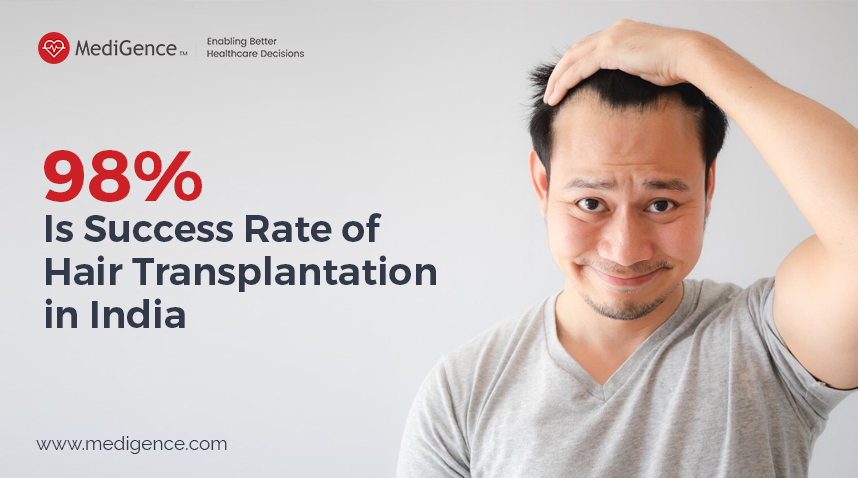
The recovery process is pretty simple for the FUE hair transplant in India as there are no stitches involved in the transplantation process. The recovery involves letting the site of the hair transplant and the site of the origin of the follicles heal. These are wrapped in protective bandages by the doctors after the procedure. The doctor will tell the patient to come on a particular day to get the bandages removed so that the evaluation of the condition of the hair transplant can be done. The doctor will also prescribe some painkillers to relieve any pain after the hair transplant procedure. Antibiotics will also be prescribed so that the sites of transplant and the origin site do not get any type of infection. Swelling is a common side effect of the FUE hair transplant in India and can be easily managed by a few anti-inflammatory pills that the surgeon will prescribe. A typical person can once again resume their daily activities after a few days of the procedure. The transplanted hair will typically fall out in about two or three weeks after the surgery. This is normal, and this process allows the new hair to grow.
Doctors may also prescribe a certain kind of special medication to patients to strengthen hair growth in their bodies. These medicines will also help in controlling hair fall in later stages of life and bring a confident look to the personality of the patient.
Related Reads:
Hair Transplant: Symptoms, Classification, Diagnosis & Recovery
Ear Surgery (Pinnaplasty): Symptoms, Classification, Diagnosis & Recovery
Dermal Fillers: Symptoms, Classification, Diagnosis & Recovery
Lip Augmentation: Symptoms, Classification, Diagnosis & Recovery
Six Pack Surgery: Symptoms, Classification, Diagnosis & Recovery
V-Line Jaw Surgery : Symptoms, Classification, Diagnosis & Recovery











